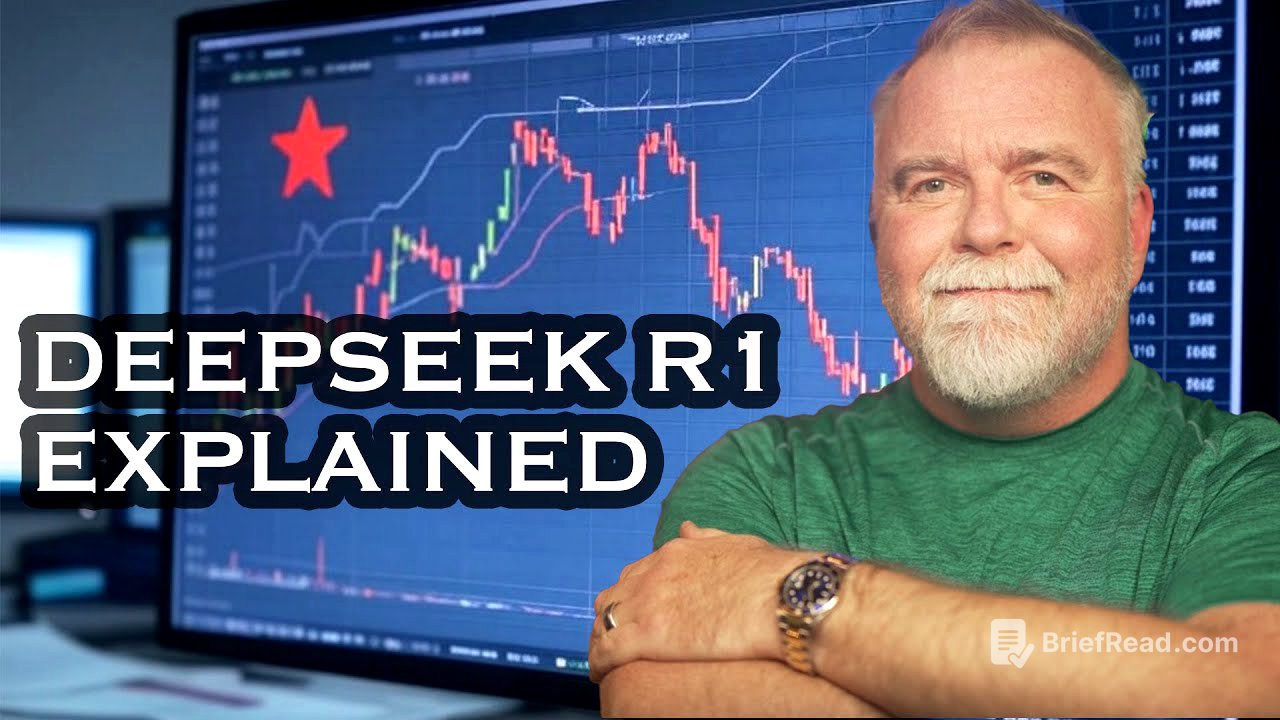TLDR;
This video discusses the release of DeepSeek R1, an open-source AI model developed in China. DeepSeek R1 has been described as a "Sputnik Moment" in AI, as it challenges the dominance of American AI companies like OpenAI and Anthropic. The model is notable for its low cost of development, its ability to achieve performance comparable to larger models, and its potential to democratize access to AI technology.
- DeepSeek R1 is a distilled language model that uses larger models as scaffolding to create a smaller, more efficient model.
- It can be run on consumer-grade hardware, making it accessible to a wider range of users.
- The open-source nature of DeepSeek R1 could accelerate AI adoption globally and challenge the dominance of US AI companies.
DeepSeek R1: China's AI Sputnik Moment [0:00]
This video begins by introducing DeepSeek R1, a new open-source AI model developed in China. The model has been described as a "Sputnik Moment" in AI, as it challenges the dominance of American AI companies like OpenAI and Anthropic. The video highlights the fact that DeepSeek R1 was developed at a significantly lower cost than its American counterparts, reportedly for under $6 million. This is in stark contrast to the tens of billions of dollars invested in developing similar models in the US. The video also notes that DeepSeek R1 was developed without access to the latest Nvidia chips, further emphasizing its cost-effectiveness and potential to disrupt the AI landscape.
DeepSeek R1: How It Works [2:08]
The video then delves into the technical aspects of DeepSeek R1, explaining how it utilizes a technique called "distillation" to create a smaller, more efficient model. This process involves training a smaller model on a larger model, allowing the smaller model to learn the knowledge and reasoning capabilities of the larger model without needing to store all the raw information. The video uses the analogy of a master craftsman teaching an apprentice, where the apprentice doesn't need to know everything but can still perform the job effectively. DeepSeek R1 takes this approach to an extreme, using multiple large models, including open-source models like Meta Llama, to guide its training. This allows DeepSeek R1 to achieve a level of robustness and adaptability that is rare in such a small model.
DeepSeek R1: Implications and Challenges [4:46]
The video then explores the implications of DeepSeek R1 for the future of AI. The video argues that the model's low cost and accessibility could democratize AI, making it available to a wider range of users, including smaller companies, research labs, and even hobbyists. The video also discusses the potential impact of DeepSeek R1 on the US AI industry, suggesting that it could undermine the competitive advantage of proprietary models and lead to increased competition in the AI market. The video acknowledges that DeepSeek R1 has limitations, such as its potential for hallucinations and its reliance on the training data of larger models. However, the video concludes that DeepSeek R1 is a significant development that could pave the way for a more democratized AI landscape.
DeepSeek R1: Conspiracy Theories and Conclusion [8:38]
The video concludes by addressing some of the conspiracy theories surrounding DeepSeek R1, specifically the possibility that China may have exaggerated the model's cost-effectiveness. The video acknowledges that it is too early to draw definitive conclusions about the model's true development costs, but it emphasizes that DeepSeek R1 is a significant development regardless of its exact origins. The video concludes by highlighting the potential of DeepSeek R1 to make advanced AI accessible to more people than ever before, and it suggests that the model could be a glimpse into the future of AI, where AI models are lightweight, efficient, and accessible to a wider range of users.
